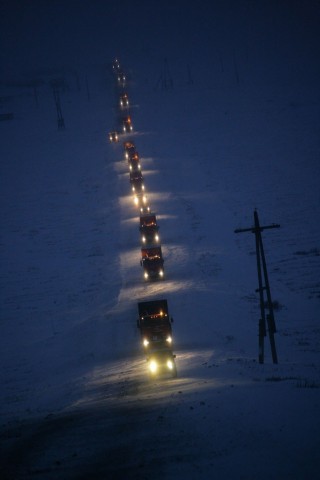This story was one of the winners of the “Best of Kinross World” contest. It was submitted by Anna Apoka, Specialist in Corporate Culture at Kupol.
One of the most challenging aspects of mining in the remote Russian Arctic is getting supplies to site and keeping track of the thousands of containers that hold them.
Currently, the Kupol site has an inventory database of more than 80,000 items – everything from equipment and spare parts to clothing and dried foods – stored in about 6,000 containers on site.
In addition, the Russia region has about 5,000 more containers at other locations, including the port of Pevek and transit warehouses around the world in places like Vancouver and Seattle.
Managing these containers costs more than $40 million annually and is immensely complicated. Kinross has been using the JD Edwards tracking system, which includes a handheld instrument that creates migration routes and a database administrator, to track supplies. However, with this system, the site can’t always determine the precise movement of the container. The database also needs constant updating, which uses up valuable working hours at site.
To try and improve the tracking system, Kupol launched a pilot project developed by the IT and CI groups called the Radio Frequency Identification Tag Tracking (RFID) system in 2014. The pilot project had a two-prong approach: installing 2,000 RFID tags on both sides of 1,000 containers and developing an application which linked the RFID and container numbers to a central database.
The RFID system enabled Kupol to view the movement of each container online, to see the precise contents of each container and follow the container through its entire “life cycle” – from purchase through utilisation. The RFID system also allowed the site to locate containers faster and reduced the risk of losing them. Most importantly, it gave much better control of the container fleet, which could potentially yield significant savings.
The pilot project has been put hold on for now, as scaling up the project to the regional level has been a challenge – the harsh climate, vast distances and sheer complexity of the supply chain process at the region posed major hurdles.
However, the Logistic and Procurement Department, CI and IT groups are optimistic that full implementation is possible. After tracking thousands upon thousands of supplies across oceans and ice roads, they’re used to challenges!

Container transport in winter

RFID tag mounted on the side of container

Container storage at Kupol

Mounting tag on container



